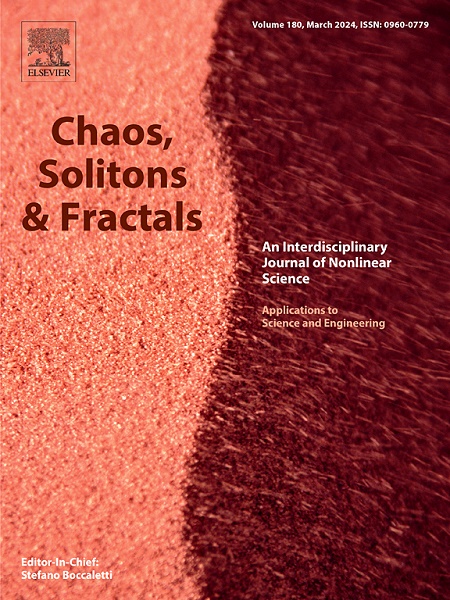Floquet topological edge states at zigzag and twig edges of the graphenelike moiré lattice
IF 5.3
1区 数学
Q1 MATHEMATICS, INTERDISCIPLINARY APPLICATIONS
引用次数: 0
Abstract
We present and demonstrate topological edge states in the graphenelike moiré lattice composed of helical waveguides. The longitudinal helical modulation induces an artificial gauge field, which breaks time reversal symmetry in the photonic graphenelike moiré lattice and gives rise to topological edge states. By calculating the Berry curvature and Chern numbers of all bulk bands, we further confirm the occurrence of a topological phase transition. The previous research has shown that the zigzag edge of the graphenelike moiré lattice supports edge states. Here, we theoretically and experimentally demonstrate that the twig edge also supports the edge states. The band structures for both the zigzag and twig edges reveal that the degenerate edge states transform into crossed unidirectional edge states within the helical waveguide configuration. We investigate the propagation dynamics of the topological edge states along both the zigzag edge and twig edge in helical waveguides array. The results show that the excited beam propagates unidirectionally along the edge without coupling into the bulk or experiencing backscattering, even in the presence of defect. Our findings indicate that the graphenelike photonic moiré lattice offers a novel platform for exploring topological physics and exhibits potential applications for the development of advanced optical devices.
石墨烯类莫尔晶格之字形和树枝状边缘的Floquet拓扑边缘态
我们提出并展示了由螺旋波导组成的类石墨烯莫尔晶格的拓扑边缘态。纵向螺旋调制产生了一个人工规范场,打破了光子类石墨烯莫尔晶格的时间反转对称性,产生了拓扑边缘态。通过计算所有体带的Berry曲率和Chern数,我们进一步证实了拓扑相变的发生。先前的研究表明,类石墨烯莫尔晶格的锯齿形边缘支持边缘态。在这里,我们从理论上和实验上证明了小枝边缘也支持边缘状态。锯齿形边缘和细枝边缘的能带结构表明,在螺旋波导结构中,简并边缘态转化为交叉的单向边缘态。研究了螺旋波导阵列中拓扑边缘态沿之字形边缘和细枝边缘的传播动力学。结果表明,即使存在缺陷,激发光束沿边缘单向传播,不会耦合到体中,也不会发生后向散射。我们的研究结果表明,类石墨烯光子莫尔晶格为探索拓扑物理提供了一个新的平台,并在先进光学器件的开发中具有潜在的应用前景。
本文章由计算机程序翻译,如有差异,请以英文原文为准。
求助全文
约1分钟内获得全文
求助全文
来源期刊

Chaos Solitons & Fractals
物理-数学跨学科应用
CiteScore
13.20
自引率
10.30%
发文量
1087
审稿时长
9 months
期刊介绍:
Chaos, Solitons & Fractals strives to establish itself as a premier journal in the interdisciplinary realm of Nonlinear Science, Non-equilibrium, and Complex Phenomena. It welcomes submissions covering a broad spectrum of topics within this field, including dynamics, non-equilibrium processes in physics, chemistry, and geophysics, complex matter and networks, mathematical models, computational biology, applications to quantum and mesoscopic phenomena, fluctuations and random processes, self-organization, and social phenomena.
 求助内容:
求助内容: 应助结果提醒方式:
应助结果提醒方式:


